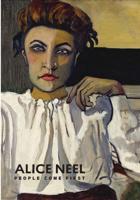Publisher's Synopsis
A collection of dazzling and daring Japanese traditional art. Rimpa, one of the major art movements of Japanese painting, was founded in Kyoto in the seventeenth-century by Hon'ami Koetsu and Tawaraya Sotatsu. Years later, the style blossomed under brothers Ogata Korin and Ogata Kenzan and then was consolidated and popularized in Edo by Sakai Hoitsu and Suzuki Kiitsu. A characteristic feature of Rimpa is its rich decorative style, such as backgrounds with gold leaf, based on the classical Yamato-e style. Simple natural subjects such as birds, flowers, and plants were often used as motifs. Rimpa artists worked in various formats, notably folding screens, hanging scrolls, fans, woodblock-printed books, lacquerware, ceramics, and textiles. Many Rimpa paintings appeared on sliding doors and walls of noble homes. The bold outlines and striking color schemes are features of Rimpa style. Emphasis on refined design and technique became more pronounced as Rimpa style developed.









